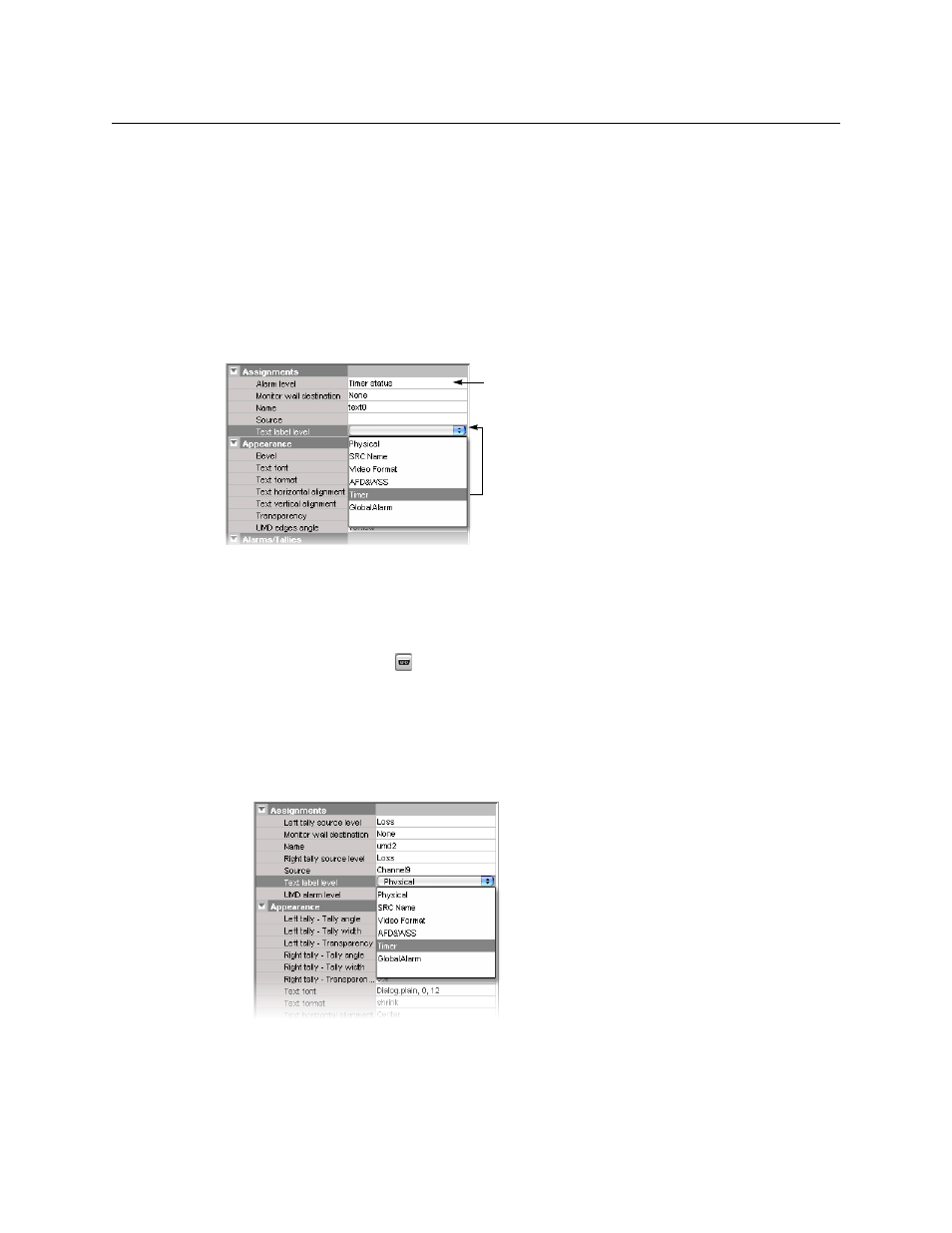Configuring layout elements – Grass Valley Kaleido-X v.7.80 User Manual
Page 408

400
Tally Interface Devices &Timer Systems
Alpermann+Velte Timer System
Configuring Layout Elements
You can now assign the logical sources you previously configured (see
System Information to Logical Sources
on page 398) to UMDs or other monitors that can
display text or alarms (e.g., time code monitors, alarm monitors) in a layout. Depending on
your purposes, you will assign the appropriate text or alarm levels to specific components
within the monitors.
For example, you might configure the assignments for an alarm monitor, by replacing the
default alarm level and text label level assignments (both set to GlobalAlarm, by default)
with an alarm level associated with the timer system, and the corresponding text level,
respectively.
The procedure below explains how to configure a UMD to report timer text and status.
To configure a UMD for dynamic reporting of text and status from a timer system
1 Click the Layouts tab, and then open the desired layout.
2 Add a UMD from the set of predefined UMDs available in the Tools pane (e.g., umd2), or
use the UMD button
on the toolbar (see
Working with Composite Monitors
3 In the Tools pane, select one of the logical sources you previously configured
Assigning Timer System Information to Logical Sources
on page 398) from the
filtered Channels/Sources list, and then drag it onto the UMD.
4 In the Properties pane, click the Text label level box, and then select the text level you
wish to monitor (e.g., the Timer level you previously configured).
5 Click the UMD alarm level box, and then select the alarm level you wish to monitor
(e.g., the Timer status level you previously configured).